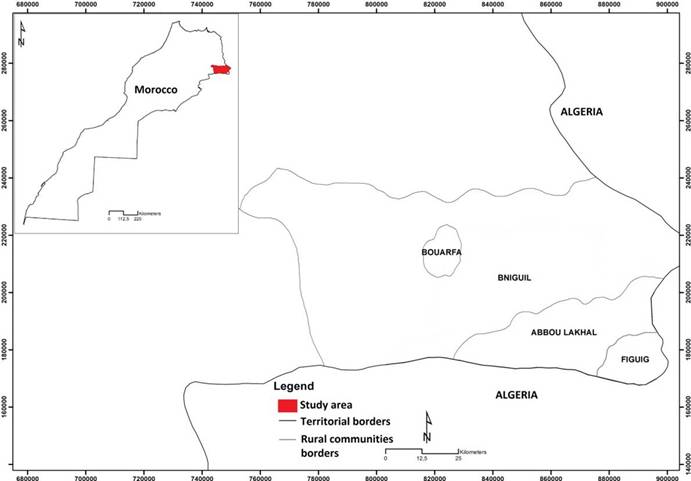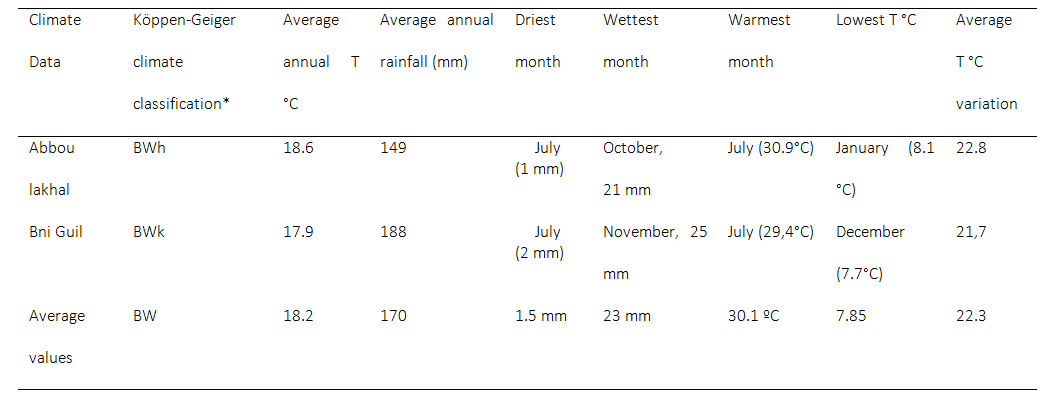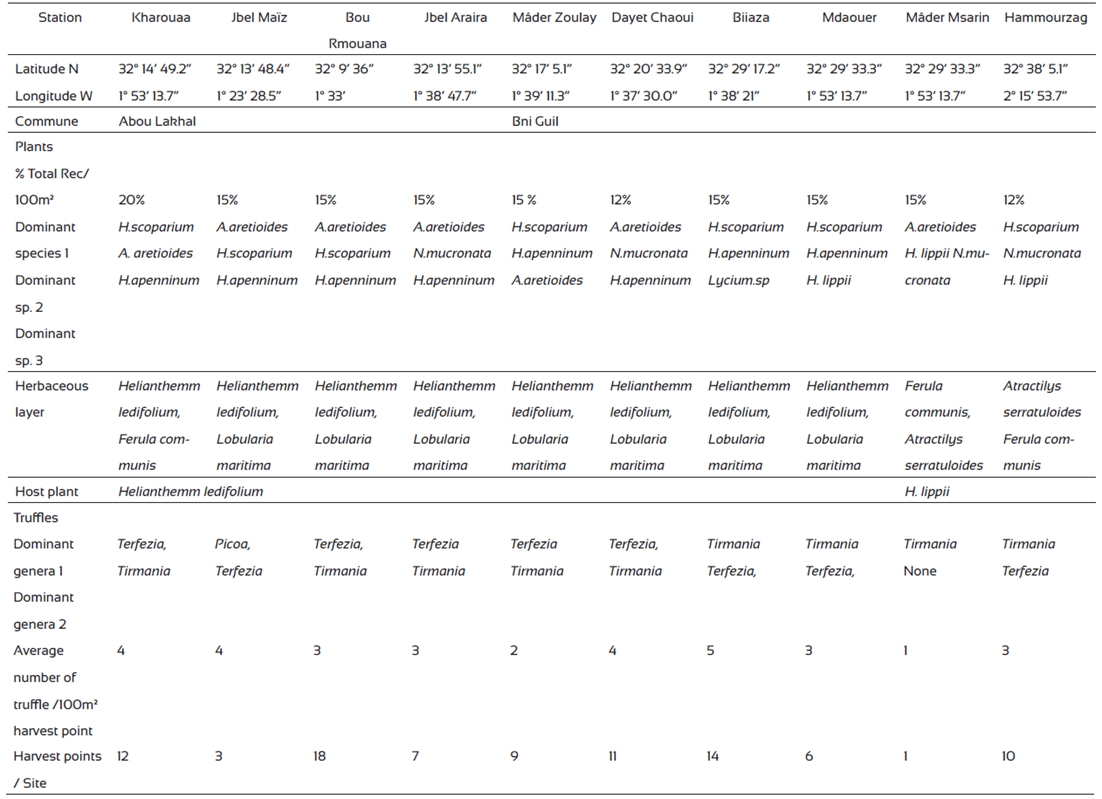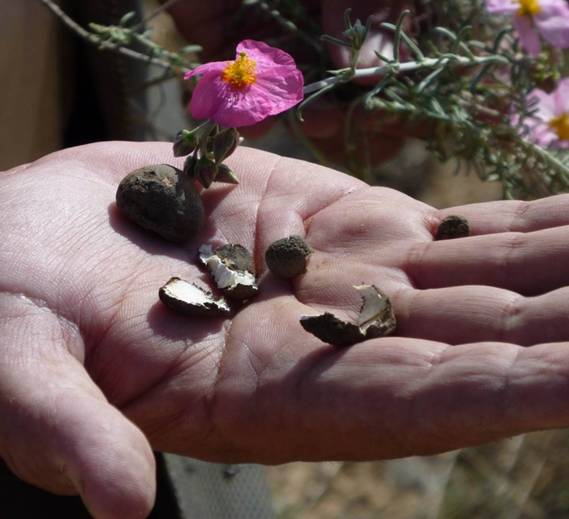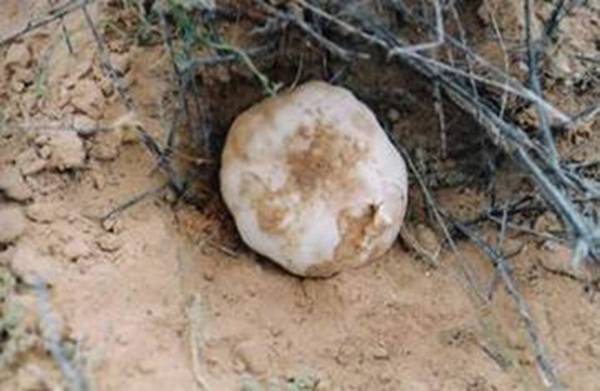Introduction
Desert truffles "Terfass" are mycorrhizal fungi that grow almost exclusively in semi-arid and arid zones. Mycorrhizas are worldwide symbiotic associations established between certain soil fungi and most vascular plants and are fundamental in optimizing plant fitness and soil quality. Mycorrhizal symbioses improve the resilience of plant communities against environment stresses, including nutrient deficiency drought and soil disturbance (Barea et al., 2011).
The desert truffles "Terfass" grow in the sand, under herbaceous angiosperms, under Cistus and Helianthemum (Alsheikh, 1984), the most common host plants of "Terfess" being generally herbaceous or perennial Helianthemum species (Awameh and Alsheikh, 1980; Khabar et al., 1994; 1999; 2001; 2014; Fortas and Chevalier, 1990, Roth-Bejerano et al., 1990; Morte and Honrubia, 1997).
Generally, “Terfass” occur in semiarid and arid areas with hot climates in almost all the Mediterranean basin especially in North Africa and Middle East countries. Diez et al. (2002) grouped them based on climatic and soil characteristics of the area of origin and they found that Helianthemum hosts have a wide edaphic tolerance which explains the occurrence of several truffle species hosted by Helianthemum in both acid and basic soil. The formation of truffles depends on several factors such as the rainy season (including length and amount of precipitation), the soil types and some abiotic characteristics as water availability and climatic conditions.
Desert truffles grow in arid desert climate characterized by very hot summers with high humidity and relatively cooler winters (Mandeel and Al-Laith, 2007). In Algeria the productive area of desert truffles are characterized by its aridity and high average temperatures (Bradai et al., 2013). A factor of paramount importance in the formation of dessert truffles are the autumnal rains (Bradai et al., 2013). Khabar et al. (2001 ; 2016) and Zambonelli et al. (2014) described the area localized in the East and South eastern Morocco in arid and subdesert climate and calcareous soil and they identified five species of desert truffles belonging to three genera: Tirmania pinoyi, Tirmania nivea, Terfezia boudieri, Terfezia claveryi and Picoa juniperi associated to Helianthemum lipii as perennial host plant and other species of herbaceous Helianthemum. H. lippii hosted all the desert truffles species in arid climate including T. boudieri and T. claveryi in the Arab Peninsula (Alsheikh, 1994); T. boudieri, T. claveryi, Tirmania pinoyi, T. nivea and Picoa juniperi in the Moroccan High plateaus (Khabar et al., 2005) and Médenine in Tunisia (Slama et al., 2010); and Terfezia boudieri in Negev desert (Sitrit et al., 2014).
This work aims to study some biological (phytosociology, host plants and presence of shrubs) and abiotic ecological parameters (climate and soil) which influence the distribution of the desert truffles in pilot productive Moroccan areas in order to identify its general characteristics and particularities.
Material and Methods
Study areas
The study area is administratively located in the province of Figuig, in the eastern part of the rural commune of Bni Guil, which is a rural commune placed in the southeastern part of Morocco. The study area (Figure 1) is naturally limited by a range of mountains (mountain in Arabic =Jebel) into the chain of the high Atlas of the southern side by the most important summit, the biological and ecological interest site of Jebel Grouz (1920 m a.s.l.) representing a natural territorial limit between Morocco and Algeria.
The choice of the studied sites was based on the investigation of the nomad population, seasonal collectors, and truffle production data of 2013 by kg per a three-month season in various production sites. These data were obtained from the Provincial Department of Agriculture of Figuig. No data were recorded recently due to the great production fluctuation and low harvests.
Ecology
Desert truffles “Terfass” soil of 13 productive site, six in east and seven in the western part of the study area were analyzed (Table 1) (PDPEO, 2005). Rainfall and temperature data were obtained from climate-data.org. For Bni Guil we used Bouarfa city climate data station, the urban center of Bni Guil (Table 2).
Mycological and phytosociological study
Mycological and phytosociological surveys were conducted according to the method defined by Braun-Blanquet (1952), in an area of 100 m² of a representative and homogeneous harvest point. Knowing that every productive site can contain several harvest points. These areas included the dominant perennials and herbaceous strata identified directly on the field. The distinction among truffle species is typically based on both macromorphology and micromorphological characters (Malençon, 1973). In the laboratory, small fragments were taken from the gleba, crushed and mounted in KOH 5%. The observation by light microscopy allowed the observation of ascospores and to specify their sizes, shapes, color, and the degree of maturity of the truffles by using the Key of Tuberals of Morocco (Khabar, 2002).
Results and Discussion
Abiotic conditions
The study area is relatively mountainous. Every site nomenclature refers to a relief; there is the lowland, the Jebel foothills (Jebel=Mountain), (Dayet =Lake), (Maader =Lowland where there is an intersection). It is therefore a very clear contrast. Nine productive sites were selected for this study, knowing that, each site could contain from one to several harvest points, the surface of a homogenous site varied, and therefore was linked to another close site if there was no orographic barrier between them.
(i) Climate and soil: Climatic parameters are among the most important abiotic factors that effectively control the occurrence of desert truffles (Trappe et al., 2008 a, b). In eastern Moroccan steppes, vegetation is affected by climate; its intensity seems more amplified in the presence of the most pressing anthropic factors on pastoral resources (Bechchari et al., 2014). The climate in our study area was desert with moderate rainfall in both winter and summer, with average temperatures of 17.9 ° C in Bni Guil (k: dry and cold) and 18.6 °C in Abbou Lakhal (h: dry and hot). The average annual rainfall was 170 mm, with June and July as the driest months with 1.5 mm of average rainfall. On average, 57% of the rain fell before the end of March and nearly 92% by the end of April (PDPEO, 2005). Usually good annual rainfall from October to March makes a good harvesting season desert truffles in Algeria (Bradai et al., 2014). Autumnal precipitation was higher, 21 mm in October for Abou lakhal and 25 mm in November for Bni Guil, which is called Choula by local and nomad population. Meteorologically, heavy rain showers during mild to warm weather (25-30 ◦C) coupled with heavy evening or early morning dewfalls and thunder and lightning has been considered an essential requirement for truffle formation (Al-Rahmah, 2001).
(ii) Soils analysis. This showed a sandy structure, very low contents of organic matter, alkaline pH and very low levels of nitrogen and phosphorus. Corresponding to the fact that soils with the low P availability is highly correlated to a low organic matter, from 10 to 20 mg/kg (Bonifacio and Morte, 2014). On the other hand, the potassium and calcium contents were high. According to Morte et al. (2009) variations in the content of carbonate and pH affect the presence of truffle species.
Phytosociology and mycological diversity
Phytosociology: The dominant species were Anabasis aretioides, Hammada scoparium, and Helianthemum appeninum . The host plants Helianthemum lippii (Figure 2) called locally “Gurish” and Helianthemum ledifolium called locally “Tegsis” were included into an Anabasis aretioides Bugen steppe studied in Oriental Morocco (Guinet, 1954). Dominance of A. aretioides is used by harvesters as an important parameter to identify a desert truffle area. The formation characterized the rocky soils vegetation and covers quite large areas between Bouarfa and Figuig under a Desert bioclimate (Ben El Mostapha et al., 2001). No desert truffles were collected under the perennial Helianthemum apenninum and no other host plant was signaled by nomads and seasonal harvesters. Ninety percent of native people in Algeria do their truffle searching where host plants Helianthemum spp. are abundant (Bradai et al., 2014). Plants from the genus Helianthemum were the only host plants and sometimes desert truffles were linked to their roots. In Mader Msarin and Hammourzag, Tirmania and Terfezia species were identified under Helianthemum lippii when Helianthemum ledifolium was totally absent. On the other hand, and despite the presence of the perennial Helianthemum lippii in Mdaouer site no desert truffles were recorded, whereas Helianthemum ledifolium was dominant (Table 3).
Mycological diversity: There was a big variation in the number of desert truffles collected and the dominant species collected. We had some particularities in the site of Jbel Maiz characterized by the presence of Picoa juniper (Figure 3). The mycological study showed variability in the number of harvest point’s number per site and the number of desert truffles collected per harvest point. A dominance of ascomata belonging to the genus Terfezia (Figure 4) in Abbou Lakhal and dominance of the genus Tirmania (Figures 5 and 6) were recorded in Bni Guil.
A particular presence of Picoa genus represented in Morocco by one species Picoa juniperi by (Khabar et al., 2001) was identified in Jbel Maiz site. This has been considered as an infrequent species by Calogne (1982).
The average number of desert truffles collected in harvesting points of 10m²x10m² ranged from 1 to 4. In the same site it was possible to find a variation of ascomata from a harvest point to another (Table 3).
In addition to that, soil and climate factors were favorable for the development of other non-mycorrhizal fungi as Pleurotus eryngii an edible mushroom hosted by Ferula communis consumed locally but having a moderate economic interest compared to “Terfass”.
Conclusion
Climatic and edaphic conditions favor the mycorhization and development of the following desert truffles: Tirmania nivea, T. pinoyi, Terfezia claveryi, T. boudieri and Picoa juniperi in the study area. In our study area we have a Desert climate with an average annual rainfall of 170 mm and some rainfall in October and November. Phytosociological and mycological surveys showed a dominance and presence of only one host plant Helianthemum ledifolium in Abbou Lakhal conditioned by microclimate created by orographic reliefs. Meanwhile, mycological surveys showed a dominance of Terfezia then Tirmania species and the presence of a rare species of Picoa in one site. We can conclude that our study highlight the importance of biotic and abiotic factors in the distribution of desert truffles in eastern Morocco.











 text new page (beta)
text new page (beta)

